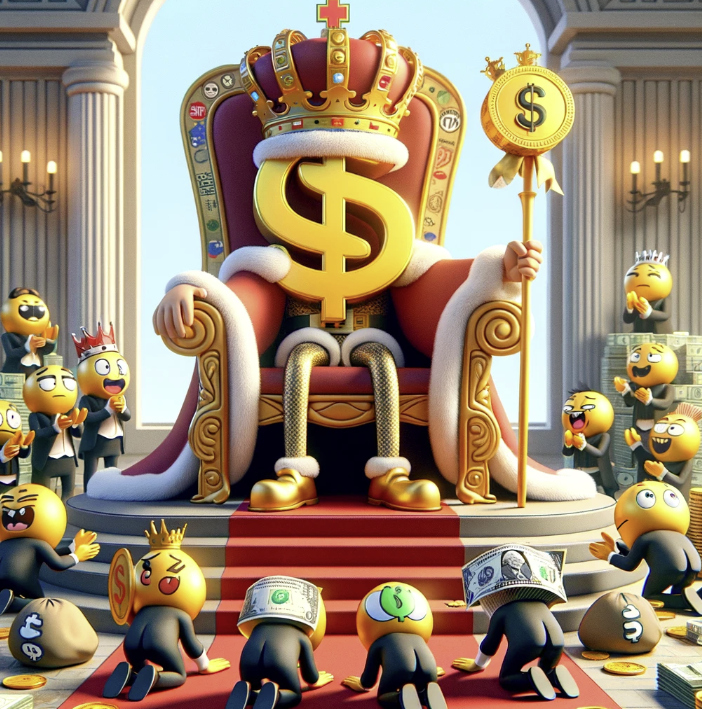
By Michael O’Neill
Traders are inherently optimistic, a sentiment captured by Tom Wolfe in his 1987 masterpiece, “Bonfire of the Vanities,” where he coined the term “Masters of the Universe.” This term depicted the high-fliers of major financial institutions like investment banks and hedge funds, known for their fierce competitiveness and high risk tolerance. They were known for having a fierce competitive drive and high risk tolerance. They expected to make money, and many of them believed that if they are not the smartest person in a room, they were probably one of two.
It’s not 1987 anymore, and a lot has changed, but not the belief of being a Master of the Universe. It still applies. Back in the 1980s, traders were handicapped by the slow trickle of international news, relying on newspapers, telex, and telephonic updates. Today, traders have 24/7 access to global financial news and data. This instant access, combined with sophisticated tools like algorithmic trading and AI for predictive analytics, allows traders to rapidly adjust their strategies to changing market conditions.

Despite all the advances, the core principles underlying the development of forex and equity strategies have remarkably maintained their relevance over the decades. The goal is to earn some income, and that still requires a leap of faith when risking your capital.
It’s early in this leap year, and traders have already taken significant leaps of faith.
This leap year has already seen significant ‘leaps of faith’ among traders. For instance, the S&P 500 reached an all-time high of 5088.80 on February 26, marking a 6.43% increase year-to-date. This rally persisted even as expectations for Fed rate cuts adjusted from 150 bps to 75 bps for 2024.. Many analysts argue that the rally is sustainable because it is due to diverse catalysts, like game-changing AI advances, and point out that markets are forward-looking. They suggest equity traders need only focus on direction, not the timing of interest rate cuts.
The Fed’s reportedly favorite barometer of inflation, the headline Core-Personal Consumption Expenditures Price Index, came in as anticipated but a touch hotter than the previous month. However, traders preferred to look at the drop in Core PCE y/y to 2.4% from 2.6% and remained confident with their interest rate outlook.
Another reason for equity market optimism is that the US economy appears to be stronger and more resilient than previously expected any rate cuts will just make things better.
FX traders suffer from the same delusions as equity traders but appear to have come to their senses. The US dollar index (DXY) fell steadily from November to the end of 2023 as Fed rate cut fever sank US treasury yields and had pundits suggesting it was the beginning of the end for the reign of “King Dollar.”

It wasn’t, of course. The DXY has recovered over half of those losses since the beginning of 2024, with the rally coinciding with the US 10-year Treasury yield rising from 3.77% on Boxing Day to 4.35% on February 23. Yields have eased to 4.25%, but the DXY remains bid.
There are a lot of reasons to like the greenback. For starters, America’s protectionist policies that started with President Trump have been expanded by President Joe Biden. And if the country can be ruled from a cell in San Quentin, future President Trump will dust off his tariff playbook and start anew. Another reason is that the pace of rate cuts will be slow until the November vote as the Fed (no matter what it says to the contrary) is loath to be seen as anything but apolitical. Lastly, if the US equity markets have more upside, where do you want to park your money?
Equity traders seem to be turning a deaf ear to the ominous sounds of thumping war drums in the Middle East and Europe. Russian President Vladimir Putin threatened to use nuclear weapons if NATO acted on French President Macron’s idea to send troops to Ukraine. Mr. Putin reminded world leaders that he had weapons that could strike targets in Europe and the US. US dollar traders were listening, and those remarks have put a floor under the DXY.
The Canadian dollar suffered along with the other G-10 majors, but it has problems of its own. Canada’s Q4 GDP grew at 1.0% y/y compared to a decline of 0.5% previously. The result is better than nothing but pales in the face of the US Q4 GDP, which grew at 3.2%. In addition, CIBC economists suggest that Canada’s GDP gain was due to the easing of previous supply constraints which helped exports and car sales but not from an improvement in domestic demand.
Another issue is runaway government spending. The Treasury Board announced the Main (spending) Estimate 2024-2025 at $449.2 billion, $10 billion higher than last year’s number. This announcement makes a mockery of Finance Minister Chrystia Freeland’s claim of investing in Canada and Canadians and doing so in a fiscally responsible way, which she said after the government announced a $20 billion pharmacare spending bill.
The Bank of Canada monetary policy meeting on March 6 will be as uneventful as watching an Office rerun for the 10th time. The BoC won’t act until the Fed does, and that will leave USDCAD locked in a 1.3350-1.3650 range.
In a leap year’s dance, a bold leap of faith shines, but a clever hedge saves the final bow.





